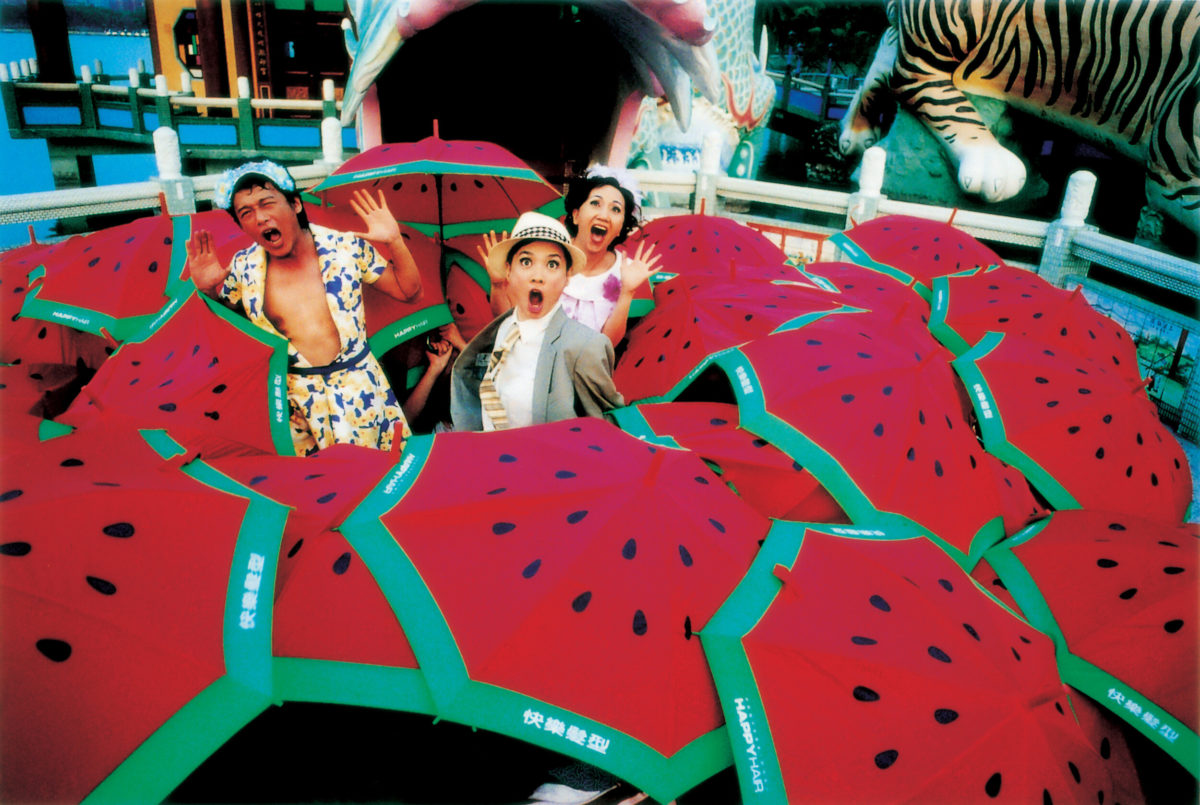Paying cinematic homage to not just a singular moment, but a singular cinematic genre and form, is a risky practice, a flouting of the unspoken untouchability of an era’s strictures, period specifics and moviegoing appetites, that some hardheaded purists may even term as arrogant, or at least ill-advised. Giving her typical short-shrift to Jacques Demy’s otherwise effervescent and endearingly studied The Young Girls of Rochefort (1967), Pauline Kael wrote in ‘Trash, Art, and the Movies’ that the film “demonstrates how even a gifted Frenchman who adores American musicals misunderstands their conventions.” Is Demy’s film, in its markedly personal construction for both director and actors—the seaside setting and its attendant itinerant atmosphere (Demy himself was from Nantes), the casting of beloved Gene Kelly, Catherine Deneuve and Françoise Dorléac porting over their true-to-life sisterhood to the universe of the musical—really to be judged on its merits as a copycat object? To Kael, it’s as if even the slightest tip of Frenchness and sixties pop is antithetical to the American musical, which in turn fossilizes this beloved artform. Is it because The Young Girls of Rochefort’s own “Knowingness Parfait” (to borrow Howard Hampton’s description of Vincente Minnelli’s backstage musical, The Band Wagon [1953]) doesn’t guarantee an exact replica of its influences that it is so hastily dismissed? As Kael also said of the film, “The French love what they can’t do.” If the musical is Americana par excellence, then its influence beyond the MGM backlot is more than deserving of similar analysis, as well as such breathless affection.
To think of musicals within a hierarchical schema where tenable skill trumps all else—The Young Girls of Rochefort features one of the greatest interdisciplinary showmen, Gene Kelly, but French actress Danielle Darrieux is the only cast member who does her own singing—and the absence of honest-to-god singing and dancing as an automatic disqualification is, frankly, to deny the communal possibilities of the genre, where one is invited into the onscreen fantasy. It’s the work of directors who, rather than merely kowtowing to conventions, have consciously refracted the hyper-personal visions of Vincente Minnelli and Li Han Hsiang—both of whom disguised their idiosyncrasies in otherwise remarkably popular and accessible musicals, even if the latter is still sadly unknown in the West—that has successfully stoked the evolution of the musical beyond its most celebrated form: song sequences arising from quotidian, backstage drama, romantic feelings that are sung rather than spoken, a multifaceted “showstopper” sequence, plenty of discernable dance breaks and a healthy ratio of livewire jaunts to slower ballads. When these methods are stretched, and even divorced from one another, occurring not in unison but in haphazard sequence, collaged together, the musical feels both modern and classical, well-versed and inspired, but also twitchy and a little restless, with a dash of bitterness slicing through the aural nostalgia. Such unwonted activity was more sublimated in the surface pleasures of the classic musical, and the most successful, modern iterations are those that tease out and take these risks.
The perennial dramatic concerns of the musical all originate from some easily identifiable—and personable—emotional state, though this doesn’t specifically beget any guaranteed “realism”. Meet Me in St. Louis (Vincente Minnelli, 1944), The Love Eterne (Li Han Hsiang, 1963), and The Umbrellas of Cherbourg (Jacques Demy, 1964) are all fantasy worlds defined by a gentle slipstream of musical elements, the impossibility and improbability of the earthbound plots lovingly ignored. The pieced-together musicals of Tsai Ming-liang and Terence Davies are the results of what transpires when the foundational suspension of disbelief of the musical isn’t challenged, but rather acknowledged, and picked at with curiosity, instead of malice.
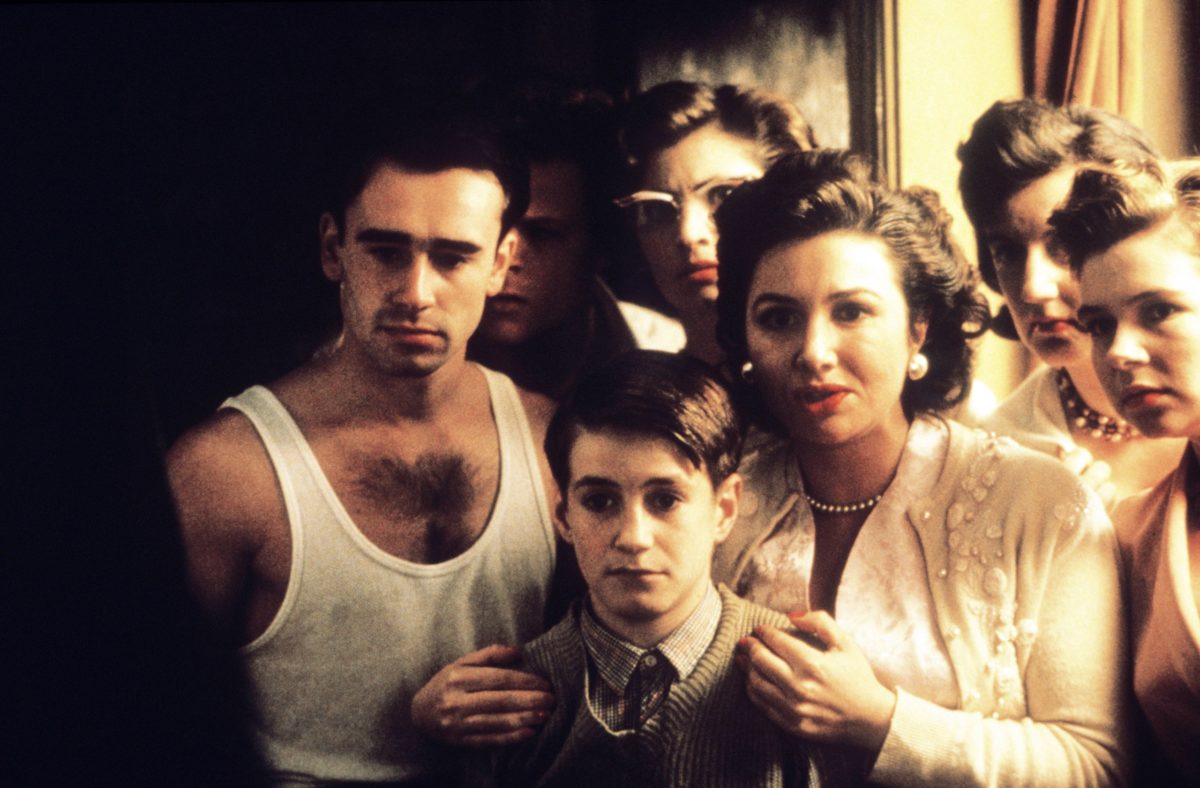
To understand these musicals, namely Tsai’s The Hole (1998) and The Wayward Cloud (2005), and Davies’s Distant Voices, Still Lives (1988) and The Long Day Closes (1992), one must accept that the popular appeal of musicals takes precedence over original songs, so that these films are decoupages of both foundational and aspirational works for the filmmakers, ceding the stage to lip-synching (Tsai), spirited and endearingly amateur a cappella group renditions (Davies), and a revivification of assorted ephemera and detritus (both). The presumed dexterity is a few degrees removed, occurring adjacently rather than being borne exclusively from the world of the film; whereas Stanley Donen or George Sidney would introduce musical numbers as a seamless—though still spontaneous—augmentation of the onscreen drama.
Donen’s Singin’ in the Rain (1952) is a generous exemplar of the illusion of seamlessness that hovers over the crown jewels of the form. The soundstages that the film’s industry-folk populate are often instantaneously turned into sites of song and dance, like Donald O’Connor’s ‘Make ’Em Laugh’, where the performer, in a bid to cheer up his crestfallen costar (played by Kelly), enacts numerous pratfalls, flips, and other airborne acrobatics, all while singing—an incredible feat of physical and artistic strength. Later, the two will turn the office of an elocution teacher into a similar site of anarchic entertainment, the camera documenting the mounting musicality in a single take. The same method, of expanding or narrowing the scope of the camera within a single take to draw further attention to the performance therein, is also applied to Frank Sinatra’s performance of ‘I Love Louisa’ in The Band Wagon, and to Kelly and Sinatra’s duet, ‘I Begged Her’, in Sidney’s Anchors Aweigh (1945).
Tsai and Davies wrestle as much fantastical potential from their chosen soundtracks as they can, the risk of any sort of aesthetic incongruousness entirely an afterthought. Nevertheless, an effect is produced, that aforementioned decoupage once again foregrounding all the implicit, personal significance of the aesthetic decisions made. The narrative may be shabby and bizarrely omissive, attributable to Davies’s anachronistic, and even oneiric, shuffling of events, and Tsai’s use of recurring characters within his cinematic world, which often is turned entirely on its head in new ways between each film. Still, there is a discernible emotional logic at play, buttressed by the musical bric-a-brac.
––––
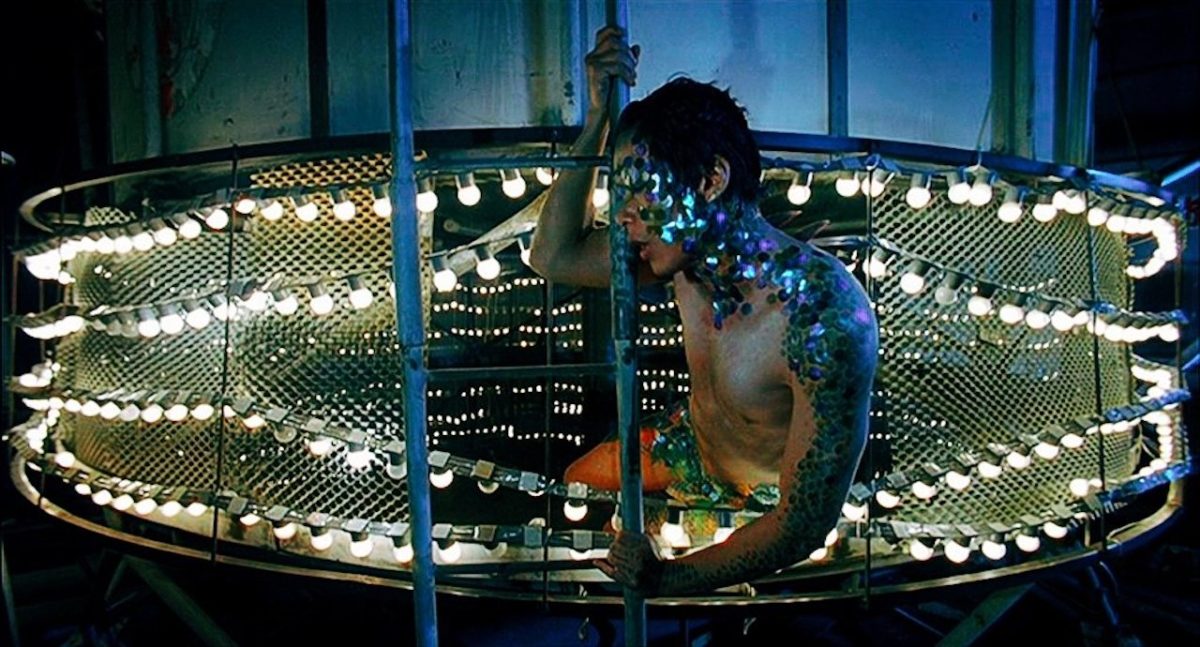
This thrilling disregard for polite continuity is best exemplified in one of the most gorgeously destabilizing sequences across either director’s films: near the beginning of The Wayward Cloud, now established as a low-rent porn actor, Hsiao-kang (played as always by Tsai’s eternal muse, Lee Kang-sheng) suddenly emerges from the waters of his illicit bath in an apartment complex’s water tower as a bedazzled, scaled and gracelessly flailing merman, mouthing the dulcet melodies of Hong Zhong’s ‘Ban Ge Yue Liang’. To make a kneejerk dismissal of the sequence on account of the pop-platitudes of the lyrics is to willfully ignore the contrasting elements Tsai is building with, the way in which he suddenly interrupts his films’ spartan, silence-heavy sprawl by maximally indulging his more humorous, horny proclivities. Verbal communication is a clotted impasse for Tsai’s characters, and when the possibility of romance presents itself to Hsiao-kang (in the form of one Chen Shiang-chyi, reprising her role in 2001’s What Time Is It There?) Hong Zhong verbalizes the subsequent sensations: “I’ve only my memories to carry me through”; “Our old dreams will never come true”; “Only in my dreams do I find you.”
One of the most attractive, inviting and hypnotizing qualities of the musical is its faith in its own fantasy; because Tsai cuts more jarringly between narrative and song, the aesthetically arresting sequence retains a whole new potency, playing like a dispatch from the characters’ own interior desires. Davies also participates in this inverse formula, using musical constructions to retreat further into a character’s head, instead of exploding outwards. His films often dissolve into hazy memory slipstreams, a stark difference from Tsai’s tender austerity, though the sought-after fantasy is even more intangible. In The Long Day Closes, the young Davies proxy, Bud (Leigh McCormack) realizes the inevitable inequities and shame to be foisted upon him by others because of his budding homosexuality. A loving home environment is still haunted by a since-passed, violent patriarch, and despite the communal warmth radiating from his mother, sisters and brothers, all fulfill a heteronormative role that Bud never can, and such matters are only intensified by the vicious masculinity of the all-boys school he attends.
At one point, Bud watches his brother and his girlfriend in private embrace, and a sung snippet between Judy Garland and Tom Drake from Meet Me in St. Louis crests on the soundtrack: Drake stutters, “over the banister, leans a face, tenderly sweet…and…and…”; “beguiling, while below her with tender grace, he watches the picture smiling”, replies Garland. Just like how Tsai reverse-engineers the musical with preexisting pop songs, lovingly Frankensteining his own, Davies does the same with snippeted dialogue and lyrics of musicals prior, so that Minnelli’s film lives on not just in selected songs, but in the very evolution from drama to fantasy. But because Bud is only a spectator to an orthodox relationship he himself will never experience, he’s placed outside the fantasy the musical affords, the relative heteronormativity that is so intoxicating is also walled-off. If only Bud’s life could then be reappropriated into song, where his own desire could be so straightforwardly laid out and ensconced within melody.
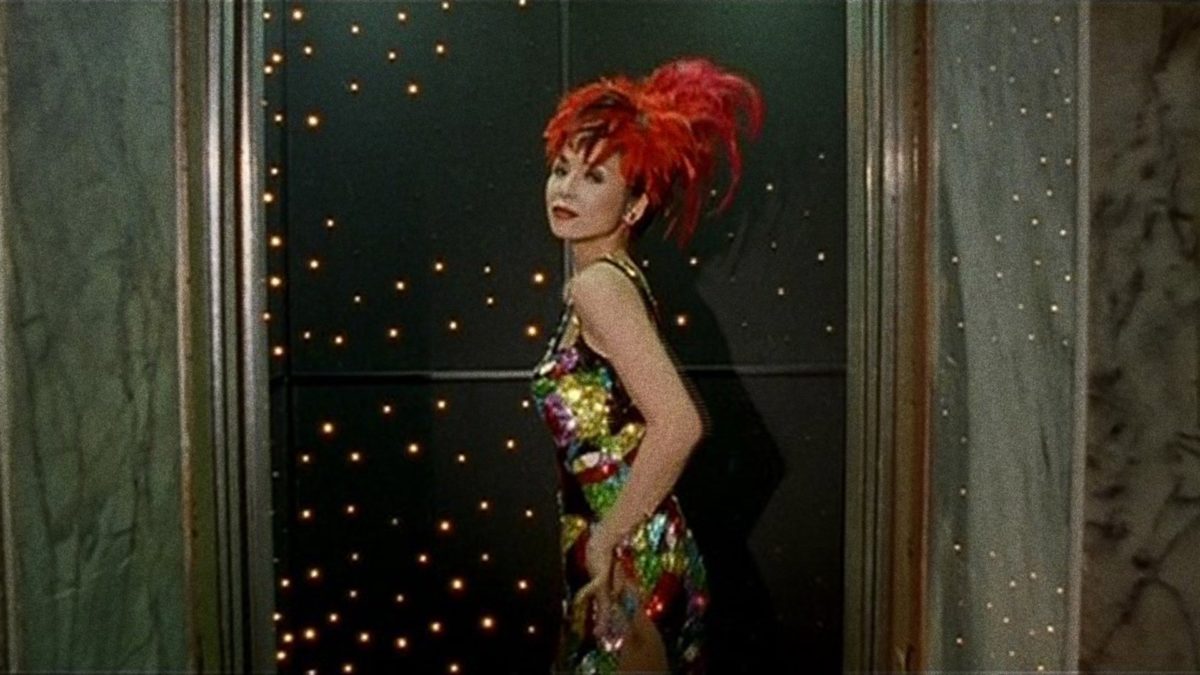
Tsai’s own methodology—as per frequent photogénie contributor Ruairí McCann, in a piece for Little White Lies, “his films articulate the difficulty in finding outer expressions for inner quandaries through what Tsai dubs the ‘counterpoint’ between realist depiction and non-realist elements”—forms itself laterally from Davies’s. Reincorporating visual elements from the narrative across the cut, as opposed to evolving from them, Tsai surprisingly festoons the taciturn and alienating with a now garish set decoration and a visual glimmer that only halfheartedly veils the oppressive surroundings (Tsai’s all-encompassing ennui and mordant humor could be likened to Frank Tashlin’s buckshot satire when The Hole and The Wayward Cloud call upon Lee to madly gesticulate and pantomime). Escapism is embodied in its equal appeal and foolhardiness in The Hole, a cross-unit romance confined to a single Taiwan apartment complex and the rare marketplace, the building itself mostly emptied out in the midst of a skin-crawling and dehumanizing pandemic, save for Lee and another unnamed occupant, played by Yang Kuei-mei, who are first brought together by a clumsily made hole in the latter’s floor, the plumber lazily abandoning the crumbly orifice into the former’s downstairs apartment.
The Wayward Cloud similarly utilized otherwise unremarkable settings for its dialectical numbers, sudden forays into impressively costumed controlled chaos in a public bathroom. The Hole, on the other hand, is a more measured affair, bound exclusively to the apartment building, so that the isolating effects of the pandemic still linger. Even when the Cantopop of Grace Chang bolsters a universally recognizable yearning, the transformation of the elevator depot or concrete stairwell into a relatively worthy stage is only a cosmetic alteration, our familiarity with the oppressive environment still fresh in the mind (such aesthetic bleakness continues to proliferate in The Wayward Cloud, now replete with drought and an exploitive porn crew). The classic musical often achieves this particular augmentation with an imparted sense of wonderment, where a relatively unremarkable setting acts as the paradoxical springboard for whatever song sequence is about to ensue; think of the drab and cluttered backstage spaces of Singin’ in the Rain or The Band Wagon, suddenly roped in as active participants. Tsai himself argues for a contemporary unattainability, the repeated return to The Hole’s emaciated narrative from its exuberant numbers producing a sensation that feels like violently crashing back to earth after being above the clouds. The musical is a prime emotional barometer, a vector for passions that would be otherwise embarrassing if merely spoken aloud; whether or not it functions as a successfully and innately transportive entity is another matter. The Hole never transcends the dilapidating building, a nondevelopment matched by the karaoke soundtrack, whose own chintzyness not only announces the film is not strictly a “musical”, but also denies the escapism these songs would provide otherwise.
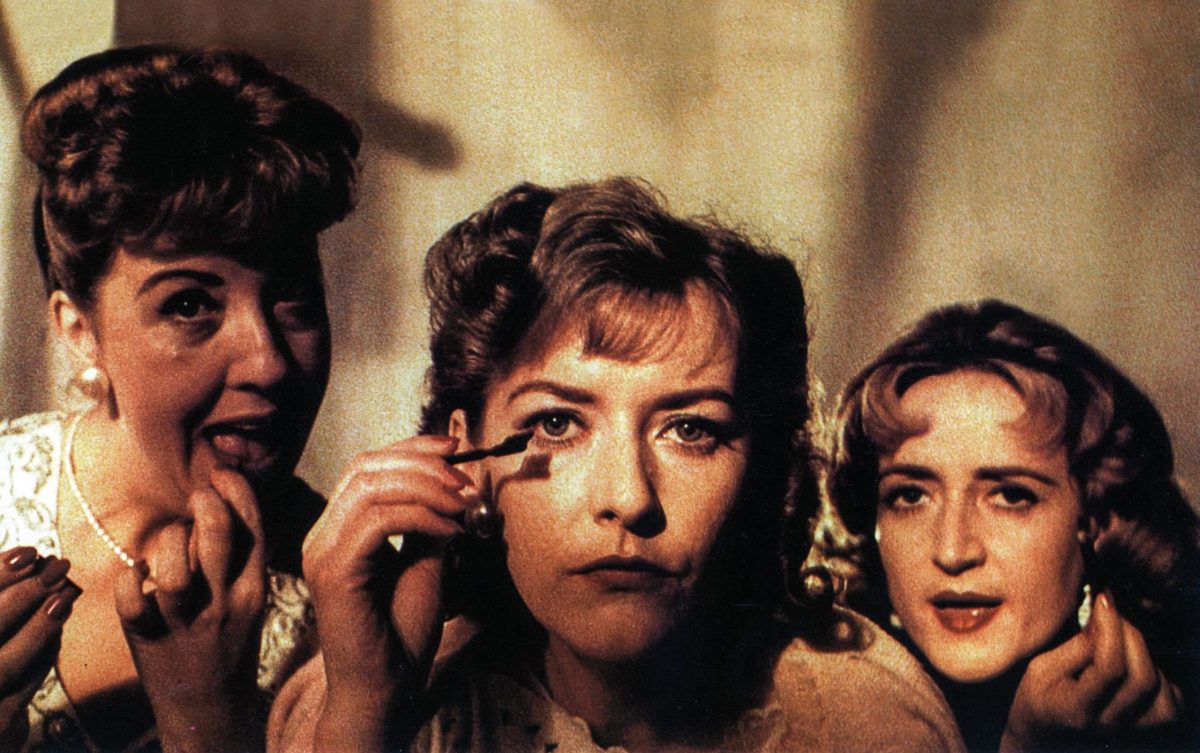
The presence of pop music bridges The Hole to Davies’s Distant Voices, Still Lives, which similarly conjures nostalgia in its “soundtrack” selections, although both directors ultimately posit that such backwards-looking plaintiveness is by and large an ineffectual panacea for the pains of the present. Davies’s films, especially Distant Voices, are burdened by generational, political and global violence, so that the group singalongs that so often cut through the visible unease are still manacled to destabilizing conflict. It’s not only Davies’s surrogates who experience such relentless maltreatment; the victims and causes pile on atop one another, from the aftereffects of WWII, to the way that poverty follows members of his families into marriage and later life (it’s important to remember that Davies was the youngest of ten children, a spectator to the growing pains of his entire family). When sheltering in a tube station during the London Blitz, Pete Postlethwaite’s abusive patriarch—modeled off Davies’s own father—urges his daughter Maisie (Lorraine Ashbourne) to sing in an effort to distract all from the air raid aboveground: as more and more voices join in ‘Beer Barrel Blues’, the communal endurance of the moment isn’t enough to quell the specters of both war and domineering fathers, the scene functioning more as a respite than an exorcism.
Even more concise is the family wedding of the oldest sister Eileen (Angela Walsh), whose music and reverie are abruptly interrupted by a lonely crying jag of brother Tony (Dean Williams); the reason for his tears are never explicitly elucidated, but the innumerable possibilities swirl around in the air, unresolved trauma and future-facing anxiety presumably only compounded by the music. Of course, Davies’s end-goal isn’t a cheap instance of fetishized cruelty, but rather a rejiggered version of all the poignant pitfalls of the musical, where impassioned reactions are triggered by a specific, omnipresent motif. Writing about Li’s The Love Eterne in Reverse Shot, Ryan Swen writes, “melodrama is nothing if not performative, and the last third of the film is like an extended series of anguishes set to tearful song.” The Love Eterne is tragic, a period drama of doomed, queer love told in the Huangmei opera tradition, but the drama surrounding it is still fantastical enough, its backlot historicism flecked with blooming colors and sublime dei ex machina. Despite anything that could qualify as fantasy, Tsai and Davies are still prone to intervals of gutting realism, the “tearful song” maintaining its pitch throughout passages entirely void of music and musical trappings.
These varying techniques in which Tsai and Davies annex ostensible inspirations come to multifaceted conclusions, the obvious result of each director wrestling with the unachievable emotional victories of art that was nevertheless foundational to their modern reinterpretations. Were they to completely erect their own musical universe, lyrics, composition, actors-cum-singers, et al., the films would be inarguably overblown, turgid in their nominal referentiality. Instead, Tsai and Davies build their respective worlds around these shards of music and dialogue, a practice almost pointillistic in how confidently the directors navigate the blending of original and aspirational work. Promulgating influence, in all its variegated manifestations, doesn’t just bring these directors closer to the musical, but instead welcomes them into the genre’s fold. The musical offers a universe where performance is sublimated within the routine and everyday, settling upon a naturalism exclusively bound to the terms of the individual film. Tsai and Davies trace the entailing influence of a life spent internalizing the films of Minnelli, Li, Donen, Tashlin, George Cukor, and more, without sacrificing the music at the center.
